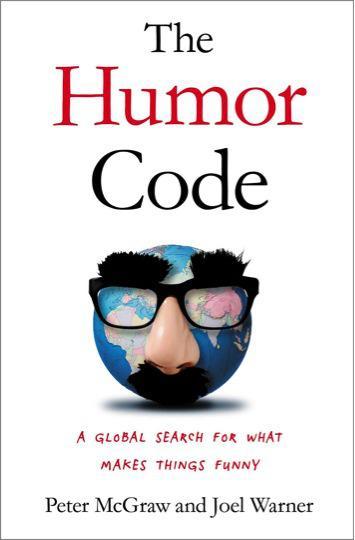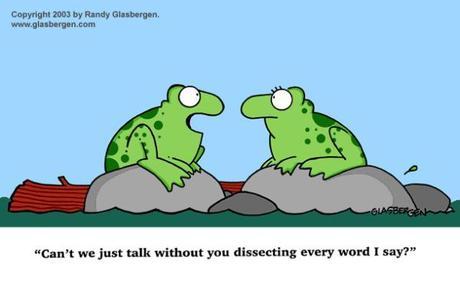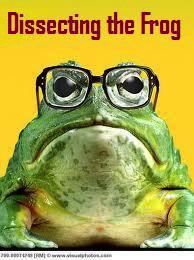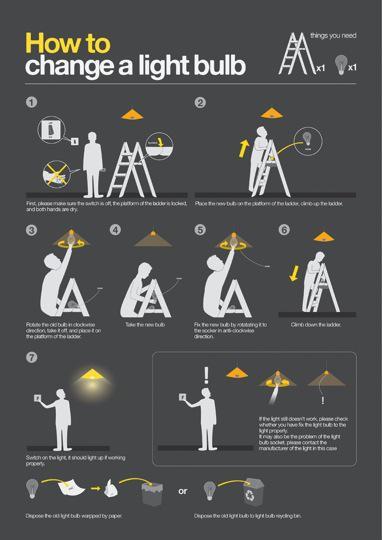
Why did the chicken cross the road?
What is your favorite joke? Do you know why it works for you?
In answering the first question, many people have clear, definite jokes in mind; others may have to run through their memories to choose from several. In either case, most humans enjoy the prospect of having “favorite” jokes, and sharing them. They are far less interested in considering WHY the joke works for them, that tougher second question from above. “Why? Because it’s funny as hell. That’s why.” There could follow a series of insults to the questioner for ruining the whole idea of a joke. Hearing jokes can be funny; talking about why they are funny is not. So it follows that teaching humor, though a very good gig by all teaching measures, is still rather a risky proposition on the whole.

The Humor Code
The study of humor has earned quite a bit of attention in scientific circles in recent years, moving well beyond the more standard interests in the humanities (my comfort zone). Most recently, and most successfully in the marketplace, is the book The Humor Code: A Global Search for What Makes Things Funny (2014) by Peter McGraw and Joel Warner. The book has received quite a bit of publicity and attention from media. For a good overview of the topic and links to some of this popular attention (For example, see: Slate article with links on Studying Humor). It sets up the basic questions that start this post and applies both a journalistic and scientific methodology to seek answers. It is a good read, and often very funny in its own right.
The Science of What Makes Things Funny – watch more funny videosPeter McGraw has been building the Humor Research Lab at the University of Colorado–Boulder, and has aggressively applied a scientific method to the study of humor. His approach, though not the first, has gained some worthy attention. Teaming up with a journalist is a stroke of geniuses (or common sense, really). Joel Warner helps provide an appealing voice for the study and makes sure the writing succeeds where so many academic books fail: it is readable. The Humor Code should appeal to teachers of humor on the whole. McGraw and Warner frame their study in terms of a romantic quest for scientific understanding of the seemingly inexplicable nature of laughter. It is a worldwide search for the keys to understanding the human sense of humor, that amorphous but essential part of the human experience. That is simply a great idea for the framing of a book, and it is hard not to hate them both for coming up with it.
Let’s start with the book’s epigraph from E.B. White. It reads:
“Humor can be dissected, as a frog can, but the thing dies in the process and the innards are discouraging to any but the pure scientific mind.”

Frogs and Language
McGraw and Warner follow that quote with: “Let’s kill some frogs.”
This beginning to the book hits home with any teacher of humor because it captures the dilemma exactly. E. B. White’s comment gets plenty of play, as it should. It is a compelling statement that rings true but is a bit disingenuous with the facts in creating its metaphor of killing frogs. White asserts that any dissecting of a joke like a frog kills either party. Who needs dead frogs or dead jokes? Nobody.
My memory of 8th-grade biology is foggy, but I seem to recall that the frogs were quite dead before any of us started hacking away at them. Perhaps I am being defensive, but I don’t want to be accused of killing frogs anymore than of killing jokes. I have spent a good, and pleasant, portion of my adult life dissecting jokes and asking others to do so as well. I think they (both the jokes and the students) survive the process. The “thing” does not die on the table, and the process of dissection does not require a scientific mind; rather, it demands only a curious one. A scientific method, however, can be helpful with funding. But I digress.

Trying to get students (or anyone) to begin examining the components of jokes–their structure, form and content; their cultural and historical context; their artistic qualities of language and nonverbal communication–can be worthwhile. It also forces those who try to answer the question the opportunity to assess their own preferences and personality traits that may push them to like one type of joke over another. This process could get rather personal rather fast. And, of course, it is political. Let’s take a moment to look at a few examples of a popular and persistent joke: the Light Bulb joke. It is simple framework with seemingly limitless permutations. Here is a link to a website out of England that claims to be a repository for the best “Light Bulb” jokes. http://www.lightbulbjokes.com/directory/t.html. I know it is English because there are so many misspellings (too many u’s and not enough z’s). I also know it has English authors because the site chooses the following as its favorite light bulb joke:
Q: How many Irishmen does it take to change a light bulb?
A: Five, one to hold the light bulb and the other four to turn the ladder round and round!
That seems a rather odd choice if based solely on the humor implicit in it. That is rather political, eh? It certainly has a social and historical context that must be open to scrutiny, as in any classroom examining humor. This seems to be one of the most popular and oldest versions of this joke, wherein the premise of the punchline depends on stereotypical assumptions and underlying social tensions. Simple jokes have complex backstories. This joke as presented above will not play very well in most American settings, but that is not to say that there are not American versions filled with similar tension and bigotry. The number in the answer is somewhat off-point and generic (presumably, the more people involved in the process, the dumber they are); what matters is that it affirms an assumption from the audience that agrees–or is simply willing to laugh about–the supposed stupidity of the targeted group. Let’s back off a bit and choose a version of the same joke above but directed at a more universally disliked group. This version has a more benign historical context:
Q: How many tourists does it take to change a light bulb?
A: Six: One to hold the bulb and five to ask for directions.
Tourists are sooooo stupid. Right? Well, yes. Well, no. But the joke can implicate almost anyone who has been in a unfamiliar place, and the characteristic of a tourist being uniformed and dependent on others and maps for their mobility (unlike Irish above) is not definitive of any single person’s identity. Moreover, the condition of being a tourist is temporary so that the insult is much more benign. Yet the form of the joke is the same. The answer implies the same status: stupid. And it is funny. Here is another version with a slightly skewed punchline that offers a more complex context for consideration.
Q: “How many feminists does it take to screw in a light bulb?”
A: “You know that’s not very funny.”
This joke has a clear political target: humorless feminists who are so politically minded in response to centuries of oppression that they refuse to accept a joke that may mock them, This version of the joke seems to be stopped cold via the interrupting voice that challenges the joke’s set-up. That voice provides the joke, a slight twist on the more standard punchline for light bulb jokes more typically provided by the questioner. This is the version of the joke as I remember if when I first heard in in the early 1990s. To my surprise, I found that the “lightbulbjokes” site provides twenty-nine answers to this set-up, the last of which is most closely aligned with my version. The answers on the whole carry a not-too-subtle backlash anger, more along the reactionary “feminazi” attacks popularized among the listeners of the idiotic but sometimes funny Rush Limbaugh in the 1990s. They, it seems, remain popular, and many of them are funny, it seems to me.
I still like the version quoted above, a version I first heard from students majoring in Women’s Studies. That statement is intended to give me some street cred for defining this joke as allowable and even funny in the version above. Others may disagree, and students need to explore the variations of opinion.
Why do I think my version is funny and benign but see most of the others as harboring much more anger? Am I right? Am I wrong? Well, how did I get here? The same questions apply to all jokes in one way or another, and such questions are getting some big media attention and that is a good thing for humor and anyone who likes to laugh and think about why.
What is your favorite joke? What makes it funny? What does it say about our culture? What does it say about you? Why a frog?
In case, you are interested, here is how to change a lightbulb:

